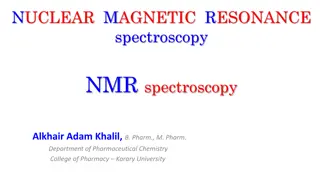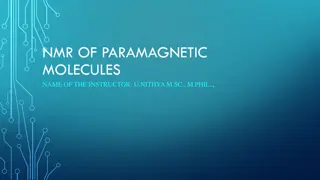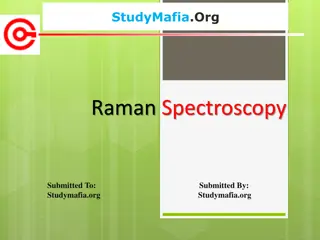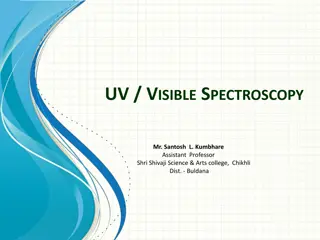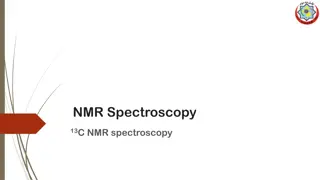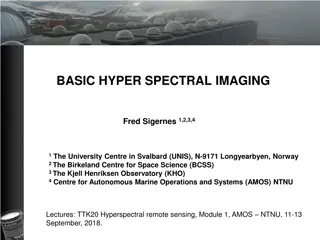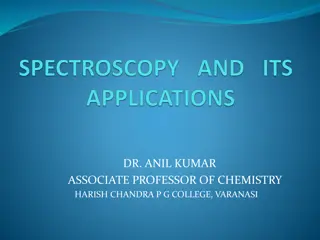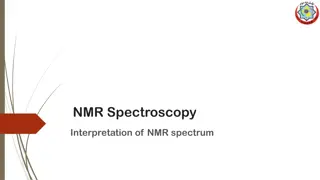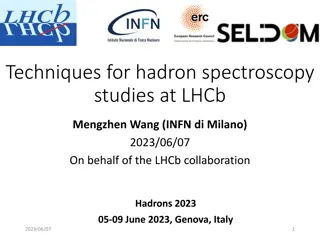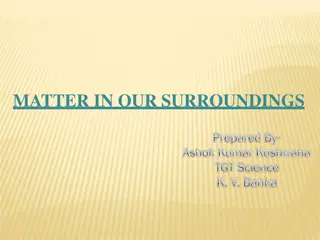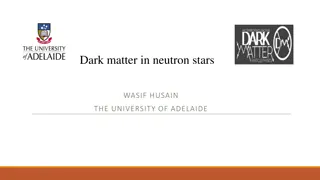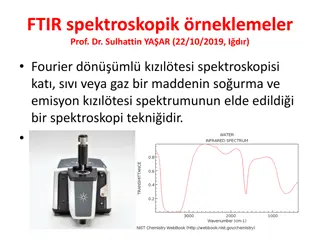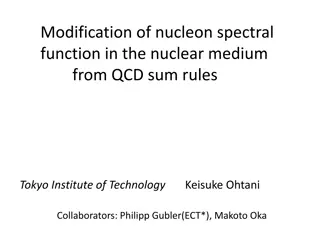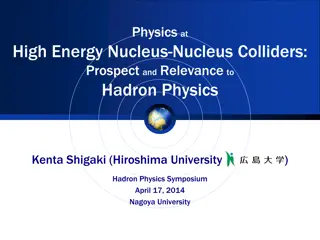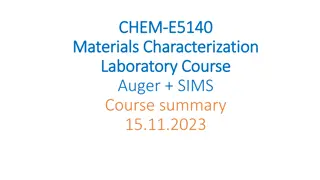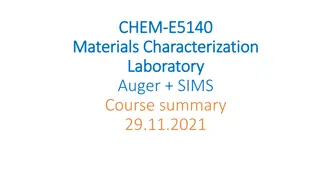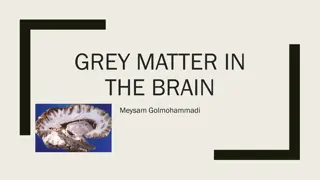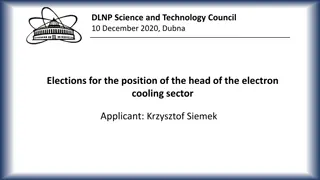Advances in Baryon Spectroscopy and Hadronic Matter Studies
Discussions at the meeting focused on interpreting HADES results for e+e- and meson production in hadronic reactions, with studies involving proton, pion, light, and heavy ion beams. The role of time-like electromagnetic transitions, baryon spectroscopy, and connecting hadronic matter studies were emphasized. Pioneering studies of time-like baryon transitions, Dalitz decay, and ongoing studies of e+e- emissions provided insights into hadronic matter properties. High-precision studies in the space-like region and advancements in electromagnetic baryonic transitions were highlighted. Modern tools and data sources for baryon spectroscopy were explored, aiming for a comprehensive understanding of baryonic structures.
Download Presentation

Please find below an Image/Link to download the presentation.
The content on the website is provided AS IS for your information and personal use only. It may not be sold, licensed, or shared on other websites without obtaining consent from the author.If you encounter any issues during the download, it is possible that the publisher has removed the file from their server.
You are allowed to download the files provided on this website for personal or commercial use, subject to the condition that they are used lawfully. All files are the property of their respective owners.
The content on the website is provided AS IS for your information and personal use only. It may not be sold, licensed, or shared on other websites without obtaining consent from the author.
E N D
Presentation Transcript
Genesis of the meeting Discussions related to the interpretation of the HADES results e+e- and meson ( , , , , , ) production in hadronic reactions (E/A ~1-3 GeV) Hadronic matter studies HADES@GSI proton, pion, light and heavy ion beams Time-like electromagnetic transitions LH2 (p) or nuclear targets Hadronic channels in p reactions e.g. - p + - n - p Baryon spectroscopy
Connecting hadronic matter studies and baryon spectroscopy e+e- emission as a probe of hadronic matter Role of coupling to baryons in hadronic matter emissivity at different temperatures Connection with chiral symmetry restoration via QCD sum rules Constraints from baryon spectrocopy
Pioneering studies of Time-like baryon transitions Dalitz decay (N*/ Ne+e- ) of baryonic resonances excited in pp/pn and p Dalitz (1232) Dalitz decay first measurement Dalitz Sensitivity to N- (1232) electromagnetic form factor q2= On-going studies of e+e- invariant masses and angular distributions in ? reactions in the region of N(1520) Promising studies .. but still a long way to go before a real extraction of form factors in the Time-like region
High precision studies in the Space like region at JLab12GeV Different decay channels Variety of models Broad range of q2 To be pursued at large q2 V. D. Burkert, Baryons 2016 5 P.L. Cole PIRE: Emergent Structures from Quarks and Gluons INT 16-62W
Electromagnetic baryonic transitions in Time-Like and Space-Like region: towards a global picture ? Time-Like electromagnetic form factors Space-Like electromagnetic form factors Precise data from JLab/CLAS up to -q2=4 GeV2 No data Inverse pion electroproduction e- q2 <0 fixed n F(q2) - * R p * R e+ e-e- p - F(q2) q2 =(M ee )2> 0 variable p e-- Theoretical tools: Dispersion Relations, Dyson-Schwinger, Vector Dominance, Constituent Quarks ? HADRON 2015 B. Ramstein 6
Baryon spectroscopy Modern tools for N* and * studies (amplitude analysis, reaction theory, dispersion relations, DSE, LQCD, ) High quality data from electron and photon scattering (polarization is crucial) Pion beam data incomplete and/or of poor quality: new data from HADES:2 production channels in the N(1520) region and extension foreseen to , , K production channels soon studies at JPARC Consensus of the baryon spectroscopy community: Physics opportunities with meson beams - Briscoe, William J. et al. Eur.Phys.J. A51 (2015) no.10, 129
Many running experiments and new projects BESIIII J-PARC MAMI CLAS12@Jlab12GeV HADES STAR Physics opportunities with meson beams - Briscoe, William J. et al. Eur.Phys.J. A51 (2015) no.10, 129
The structure of our workshop Baryon spectroscopy Experiment Theory Medium effects Time like electromagnetic structure Space like electromagnetic structure Unified description + discussion sessions Future studies
World class speakers Vladimir Braun (University of Regensburg) William Briscoe (George Washington University) Susanna Costanza (University of Pavia) Annalisa D Angelo (University of Rome) Chaden Djalali (University of Iowa) Michael D ring (George Washington University) Christian Fischer (University of Giessen) Bengt Friman (TU Darmstadt) Tetyana Galatyuk (TU Darmstadt) Leonid Glozman (University of Graz) Ralf Gothe (University of South Carolina) Helmut Haberzettl (George Washington University) Kenneth Hicks (Ohio University) Kyungseon Joo (University of Connecticut) Hiroyuki Kamano(Osaka University) Eberhard Klempt (University of Bonn) Mikhail Krivoruchenko (ITEP, Moscow) Victor Nikonov(University of Bonn and PNPI, Gatchina) Teresa Pena (IST Lisbon) Ralph Rapp (Texas A&M University) Hiroyuki Sako (JAEA) Piotr Salabura (Jagiellonian University in Krakow) Toru Sato (Osaka University) Hartmut Schmieden (University of Bonn) Federico Scozzi (IPN Orsay and TU Darmstadt) Kirill Semenov-Tian-Shansky (PNPI Gatchina) Igor Strakovsky (George Washington University) Joachim Stroth (Goethe University Frankfurt) Annika Thiel (University of Bonn) Lothar Tiator (University of Mainz) Ralf-Arno Tripolt (ECT* Trento) Jochen Wambach (TU Darmstadt and ECT* Trento) Miklos Zetenyi (WRCP Budapest and EMMI Darmstadt) Qiang Zhao (IHEP-Beijing) Thanks for your support and participation !
Goals of the meeting Broaden our horizons cross-fertilization , initiate new collaborations,.. How? talks Panel discussions, coffee breaks, Nice dinners, . the ECT* spirit
Thanks to the ECT* scientific council and staff Funding of the meeting Jochen Wambach: director of ECT* and speaker at the workshop ! Two other talks from ECT* speakers (D. Binosi, Ralf-Arno Tripolt) secretaries : Gianmaria Ziglio and Ines Campo Thanks for taking care of all the logistics ! We wish all of you a very pleasant and fruitful meeting


